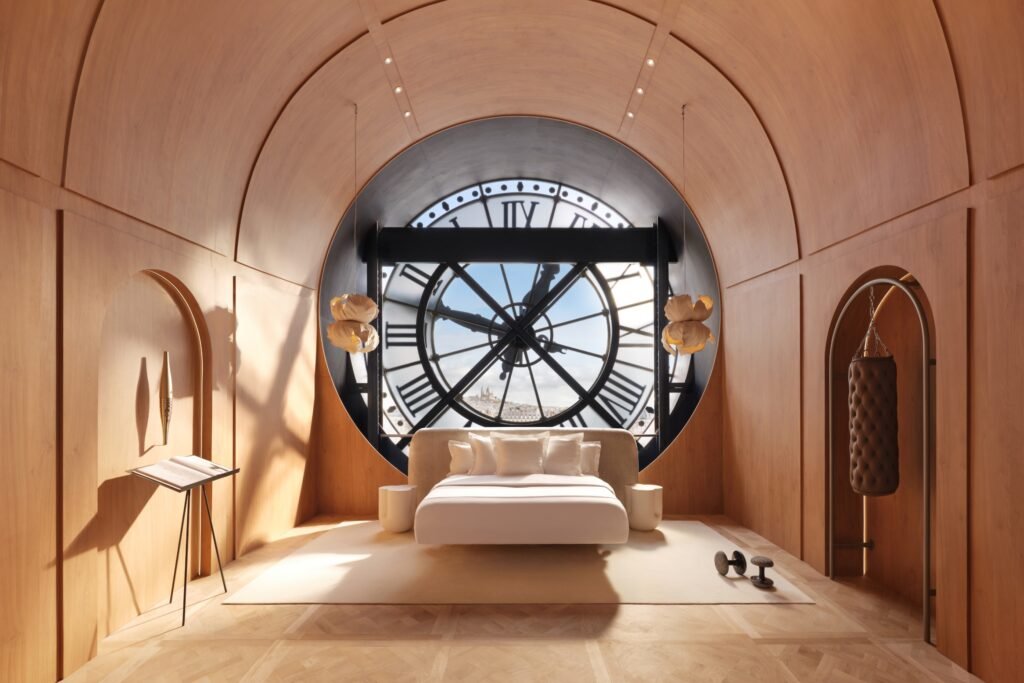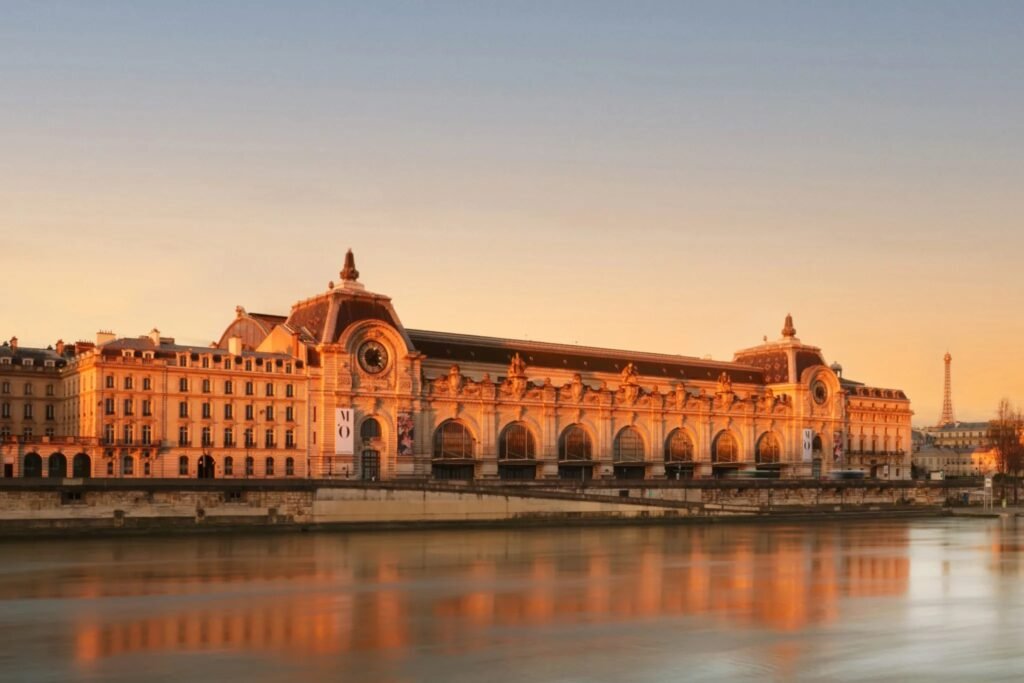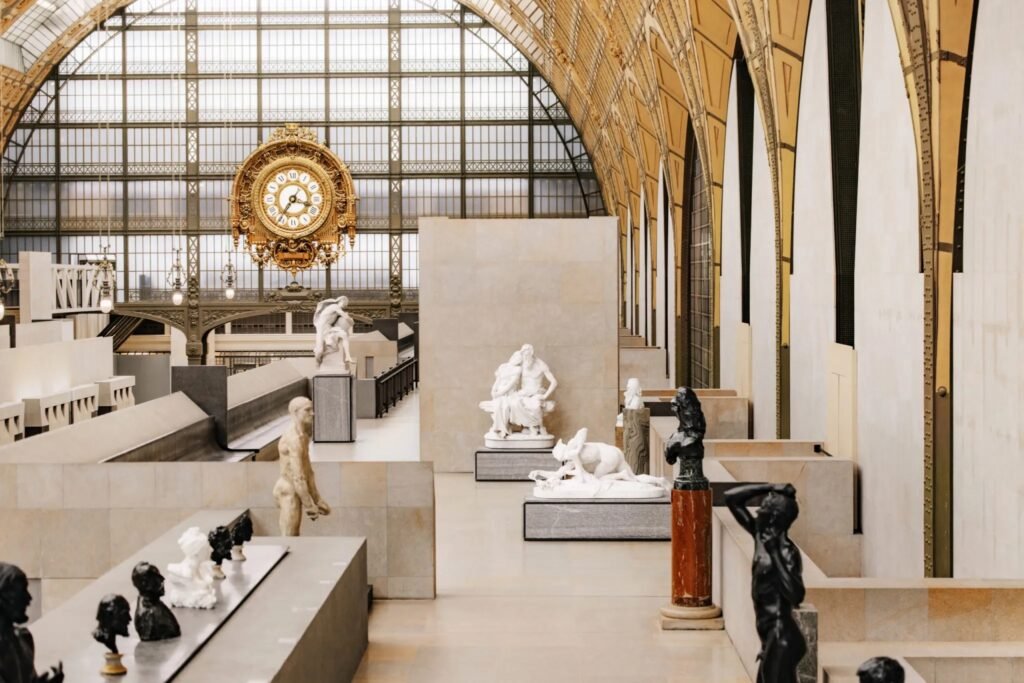Luxury in the twenty first century has quietly shifted away from material excess and toward experiences that create a deeper sense of presence. Among the many destinations that embody this change, the Clock Room inside the Musee d Orsay in Paris stands out as a powerful symbol of refined cultural wealth. While the museum itself is celebrated for its world renowned collection of Impressionist and Post Impressionist masterpieces, the Clock Room offers something even more rare. It is a setting that merges architecture, history, light and time into one unforgettable moment. The experience does not demand extravagant purchases or exclusive access. It offers a luxury that is far more meaningful. It provides a space where the visitor can pause, reflect and reconnect with a slower rhythm of life.
A Masterpiece of Architectural Transformation
The story of the Musee d Orsay is a lesson in the power of reinvention. The former railway station was constructed with steel, glass and a high arched roof that represented industrial innovation. After the decline of long distance train travel, the building risked falling into disuse. Instead of being demolished, it was reimagined as a museum. This decision preserved not only the architectural identity of the structure but also its cultural relevance.
The Clock Room illustrates this transformation perfectly. What was once a utilitarian mechanism for travelers became a monumental piece of design. The room is located at the upper level of the museum and offers a serene environment away from the more crowded galleries. Its large circular clock, crafted from metal and frosted glass, dominates the space. As daylight filters through the translucent face, the room becomes softly illuminated with a golden glow. The architectural symmetry, combined with the gentle play of natural light, creates an atmosphere that feels both intimate and majestic.
This atmosphere represents a form of luxury that does not rely on material displays. Instead, it draws value from intentional design and a thoughtful respect for history. The building itself has evolved from a symbol of industrial progress to a sanctuary for artistic preservation. The Clock Room embodies this evolution and allows visitors to witness the past and present in a single visual frame.

The Emotional Weight of a Quiet Space
The appeal of the Clock Room goes beyond its architectural significance. In a world that often prioritizes speed and efficiency, a space dedicated to stillness feels surprisingly powerful. Standing in front of the large clock, visitors experience a rare moment where time seems to slow down. The gentle hum of the museum, the filtered light and the distant view of the Seine River blend into a peaceful sensory environment.
This sensation is part of the new definition of luxury that resonates strongly with younger generations. Luxury today is not merely about rarity or expense. It is about meaning, serenity and the opportunity to step back from constant motion. The Clock Room offers this opportunity with remarkable clarity. It invites reflection and creates a sense of calm that feels both restorative and energizing.
The room also acts as a subtle reminder that the most profound experiences are often the simplest. There are no elaborate installations or overwhelming displays in the space. The clock itself is the central focus. Yet within this simplicity lies a deeper message about the relationship between human beings and the passage of time. The Clock Room does not instruct or demand. It simply presents a moment of clarity and allows the visitor to decide what that moment means.

A Refined Form of Cultural Luxury for a Modern World
In the broader landscape of global travel and cultural appreciation, the Clock Room represents a shift in what people consider luxurious. Rather than associating luxury with exclusivity, many travelers now seek authenticity and emotional resonance. They want experiences that feel grounding rather than grandiose. They want places that blend art, history and personal reflection. The Musee d Orsay provides all of this, but the Clock Room elevates the experience by offering something that feels genuinely timeless.
The room also appeals to contemporary aesthetics that value soft minimalism, natural light and architectural honesty. There is no unnecessary ornamentation. The space is designed to allow the viewer to focus on the clock and the framed view of Paris beyond it. This combination creates a visual poetry that is difficult to replicate. It is the kind of beauty that feels effortless even though it is the result of thoughtful architectural planning.
For visitors who are exploring Paris, the Clock Room offers a chance to engage with the city in a more reflective way. It encourages a pause that contrasts with the fast pace of the surrounding streets. That contrast is part of the magic. The visitor becomes both an observer and a participant in the flow of time. The experience is grounding, humbling and quietly luxurious.

Ultimately, the Clock Room at the Musee d Orsay reveals a truth about modern luxury. The most valuable experiences are not always the most extravagant. They are the ones that stay with us, reshape our perspective and remind us that time itself is a precious resource. The room does not attempt to compete with the masterpieces displayed throughout the museum. Instead, it complements them by offering a space where their themes of beauty, transience and emotion can settle more deeply into the mind.
The future of luxury is not defined by abundance but by intentionality. It is about choosing what to pay attention to and valuing the experiences that enrich our understanding of the world. The Clock Room stands as a remarkable example of this modern vision. With its quiet elegance and historical depth, it continues to captivate visitors who seek a more thoughtful and meaningful form of beauty.
Written By: Mia Quisumbing
Published On: 19th November 2025